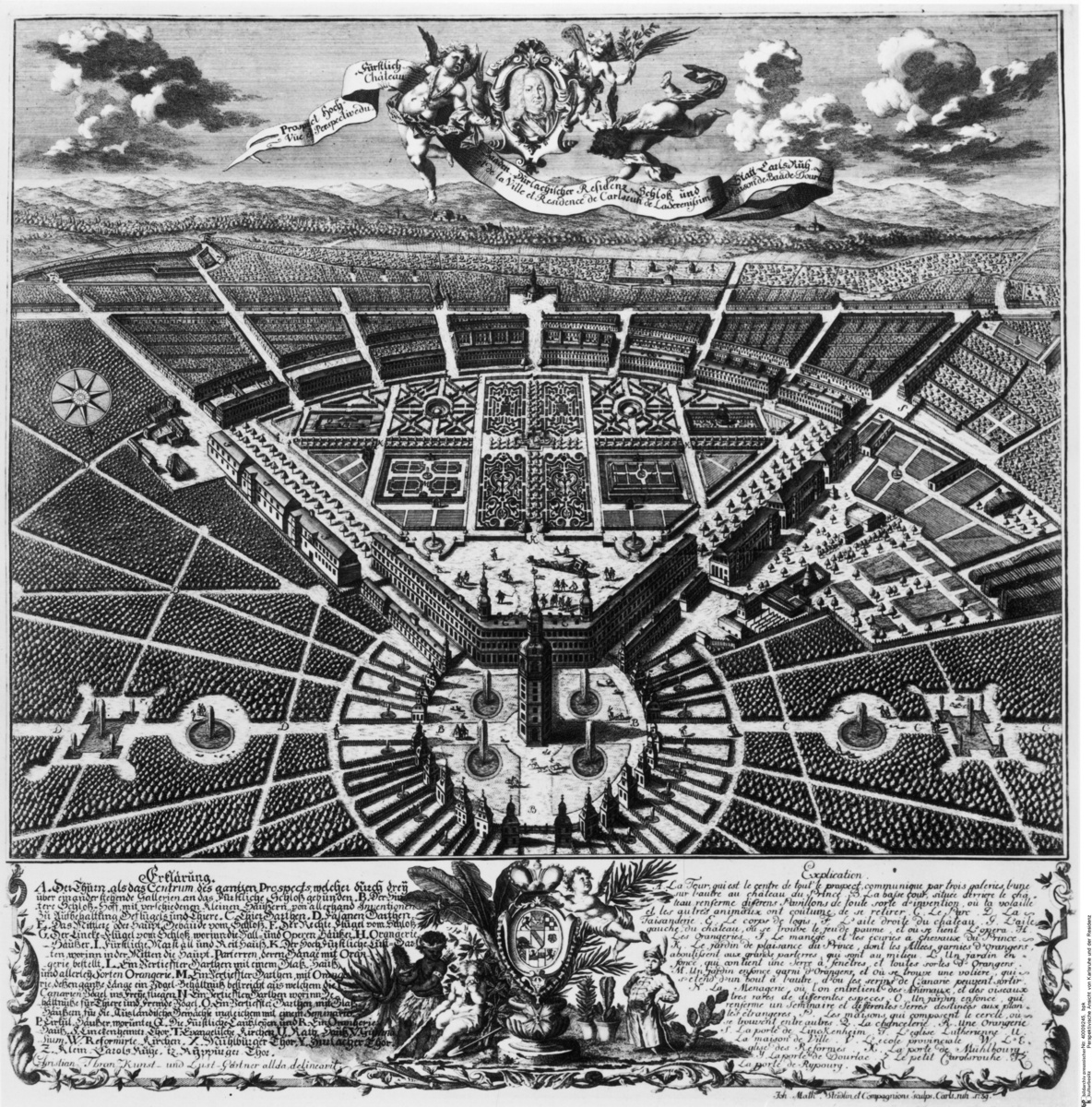Abstract
Founded in 1715 by Margrave Karl Wilhelm von Baden-Durlach (r. 1709-38) , the southwestern German city of Karlsruhe was laid out around a palace designed as a princely resting place (thus the name Karlsruhe, which can be translated as “Karl’s rest”). With its carefully structured urban plan, self-conscious grandeur, and concern for dramatic effects, this residence city embodied the Baroque aesthetic in urban planning. The princely palace was the focal point of the city; from there, 32 streets radiated outward like rays from the sun. Karlsruhe has often been described as the German Versailles. It is important to note, however, that unlike Versailles, which was deliberately built at a distance from Paris, Karlsruhe was planned as both a princely residence and a city.
